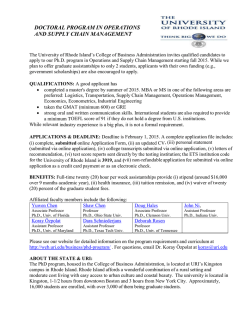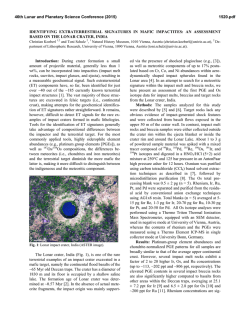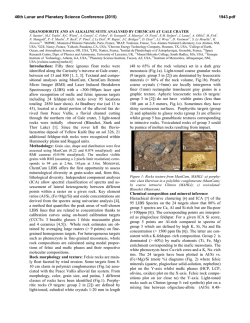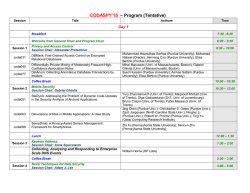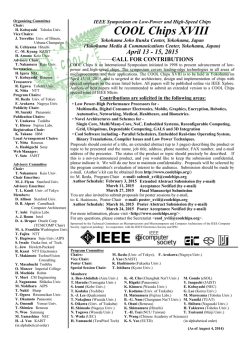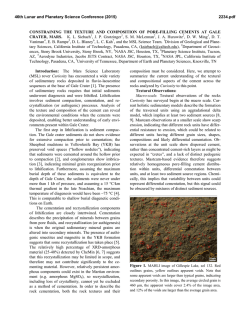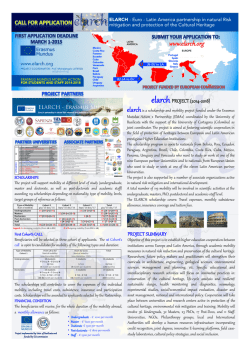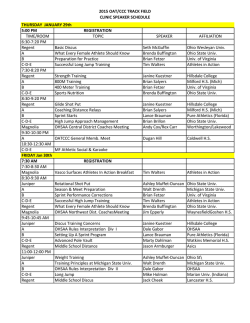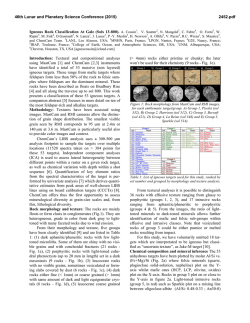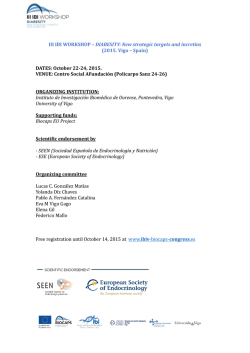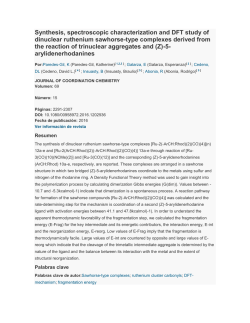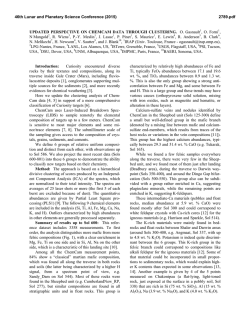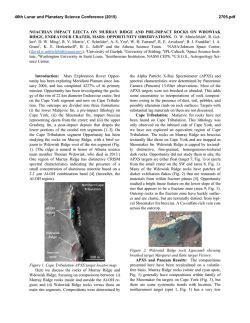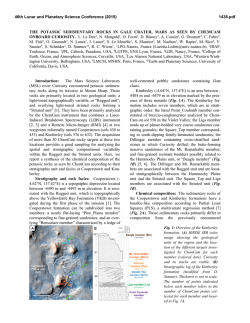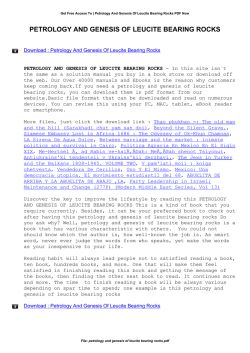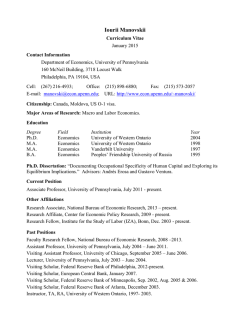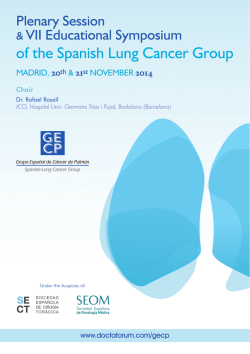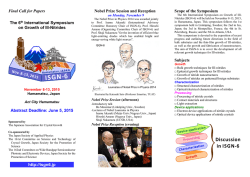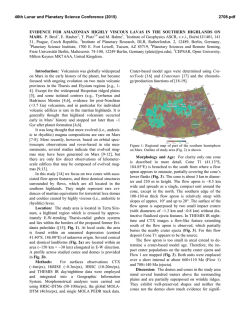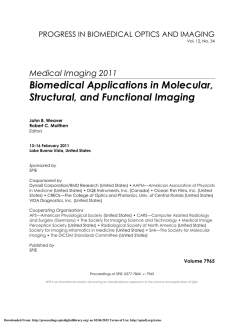
IODP-ICDP EXPEDITION 364: DRILLING THE K
46th Lunar and Planetary Science Conference (2015) 1747.pdf IODP-ICDP EXPEDITION 364: DRILLING THE K-PG IMPACT STRUCTURE J. V. Morgan1, S. P. S. Gulick2, J. Urrutia-Fucugauchi3, G. S. Collins1, L. Perez-Cruz3, M. Rebolledo-Vieyra4, 1Earth Science and Engineering, Imperial College London, SW7 2AZ, UK ([email protected]), 2 Jackson School of Geosciences, University of Texas at Austin, Texas 78758, USA ([email protected]), 3 Universidad Nacional Autónoma de México, C.P 04510, México, 4 Centro de Investigación Científica de Yucatán, C.P. 97200, Mérida, México. Introduction: Scientific drilling of the Chicxulub impact structure is scheduled for early 2016. In a joint IODP and ICDP project, a 1200- to 1500-m hole (Chicx-03A) will be drilled offshore that will penetrate the crater’s peak ring (Figs. 1 and 2). There is no consensual agreement on either the formational mechanism or the nature of the rocks that form a topographic peak ring. Geophysical data indicate that the peak ring at Chicxulub is characterized by relatively low velocity [1] and density material, suggesting that the rocks are highly fractured. Numerical models of large impacts require that the rocks behave temporarily in a fluidlike manner to facilitate the dramatic modification of a large bowl-shaped transient cavity to form a broad, flat final complex crater [2-4]. Sampling material at Chicxulub will allow the study of the rocks of an actual peak ring, and better constrain the weakening mechanism and large crater formation. formation to ground truth dynamic models [1, 3] and distinguish between competing models of peak ring formation [3, 5-6]. Sampling the material that forms the peak ring at Chicxulub will allow us to examine the mechanically weakened rocks close to surface, and see if the rocks display enhanced in situ melting as predicted by the thermal softening model [7] or if there are blocks of rock separated by discontinuities as predicted by the acoustic fluidization model [8]. Fig. 2. Velocity model (color) overlain by seismic reflection profile and location of drill hole Chicx-03A [9]. Fig. 1. Location of seismic reflection lines (red) and seismometers (blue dots), cenotes (black dots), proposed drill hole Chicx-03A and alternative site Chicx-04A (turquoise dots) and previous drill holes (yellow triangles). Scientific objectives: The drilling will address fundamental questions on the nature of peak rings, and the weakening of rocks during large impacts that allow them to collapse and form complex crater-forms. We will document the lithological and physical state of these rocks, including porosity, degree of fracturing, shock metamorphism, cataclasis, discontinuities, presence of breccias and melt. We will, thus, be able to test the working hypotheses that peak rings are formed from uplifted (and possibly overturned) target rocks, megabreccias, or some other material and use this in- Detailed mineralogical and geochemical studies of the core will provide critical information on the temperatures and composition of hydrothermal fluids expected in the wake of the impact and the longevity of such a system. Documentation of the present-day geomicrobiology and biosignatures of past life since impact will allow us to examine the effect of a large impact on the deep subsurface biosphere, where a large fraction of the Earth’s biomass resides [10-11]. These studies will have important implications for evolutionary strategies of early life on Earth, when the impact flux was much higher than today [12], and, possibly, Mars where impacts may well have changed the conditions for habitability in the deep subsurface. In addition, recovering samples of the rocks at the impact site will place improved constraints on the lithology of the target rocks (carbonates, evaporites, basement) and their porosity; the latter has a strong effect on both the passage of the shock wave and volatile release. These are fundamental input parameters for hydrocode models that describe the ejection of materials and their interaction with the atmosphere and thermodynamic calculations for condensation within the impact-generated plume [13-15]; the released volumes of soot, dust and climatically-active gases are 46th Lunar and Planetary Science Conference (2015) essential for models of the post-impact climate [1617]. The post-impact sequences will be investigated by sequence stratigraphy, geochemistry, mineralogy, bioand cyclo-stratigraphy, and back-stripping analyses. These investigations are intended to achieve the following goals: (i) Ground truth for the seismic reflection and geophysical logging data, which provide stratigraphic and lithologic control for the entire offshore basin [18-20]. (ii) Document the magnitude and duration of the tsunami, which will contribute to our understanding the sedimentology of the K-Pg boundary deposits around the Gulf of Mexico and the protoCaribbean sea, and provide baseline information on impact-generated tsunami [21-22]. (iii) Investigate the evolution of Paleogene climate, sea-level and oceanography. Chicx-03A will possibly sample impact melt and breccias. If so, detailed geochemical analyses of these rocks, with emphasis on the siderophile elements (including PGEs), will be carried out. A number of isotopic tracers (e.g., Rb-Sr, Sm-Nd, Re-Os, Cr, O, C, S) will be quantified to develop mixing models for breccia formation and impactor contribution, as well as the contribution from carbonate sediments [23]. The diverse range in Sr, Nd, and oxygen isotope compositions obtained so far from Chicxulub melt rocks and the Haitian and Mexican melt glasses suggests a complicated mixing and melting model [24]. Siderophile element and isotope tracers are a proxy for estimating the contribution from the impactor to the breccias, as well as being indicative of impactor composition; isotopic compositions of chromium and osmium will provide additional constraints on impactor type [25-27]. Drilling and Sampling: A successful pre-drilling hazard survey was conducted in 2013. Near the end of 2014 ESO (ECORD Scientific Operator) issued a notice of intent to drill Chicxulub and will proceed to tender early in 2015. A pre-drilling workhop will be held in Mérida, México, 30-31 March 2015. A call for particpating scientists will be made in the second quarter of 2015; a subset of the Science Party will spend 68 weeks offshore undertaking pore water chemistry, microbiology and other analyses. A suite of measurements will then be performed at the Bremen IODP core repository, after which the onshore Science Party will be invited to take samples. Both the working and archive halves of the cores will be sent to the Texas A&M University Core Repository in College Station, TX for permanent archiving and access by the general science community. 1747.pdf Co-Proponents: Laia Alegret, Ignacio Arenillas and Jose Arz (Univ. of Zaragoza, Spain), Penny Barton (Univ. of Cambridge, UK), Tim Bralower (Penn State Univ., USA), Gail Christeson (Univ. of Texas at Austin, USA), Philippe Claeys (Vrije Universiteit Brussels, Belgium), Charles Cockell (UK Centre for Astrobiology, Edinburgh Univ., UK), Kazuhisa Goto (Tohoku Univ., Japan), Richard Grieve (Natural Resources Canada), Christian Koeberl (Univ. of Vienna, Austria), David Kring (Lunar and Planetary Institute, USA), Takafumi Matsui (Univ. of Tokyo, Japan), Jay Melosh (Purdue University, USA), Kenneth Miller (Rutgers University, USA), Clive Neal (Univ. of Notre Dame, USA), Richard Norris (Scripps Institute of Oceanography), Wolf Uwe Reimold (Museum für Naturkunde, Berlin, Germany) Ulrich Riller (Univ. of Hamburg, Germany), Jan Smit (VU Univ. Amsterdam, Netherlands), Michael Whalen (Univ. of Alaska Fairbanks, USA). References: [1] Morgan J. V. et al. (2000) EPSL, 183, 347-354. [2] Melosh H. J. and Ivanov B. (1999) Ann. Rev. Earth Planet. Sci., 27, 385-415. [3] Collins G. S. et al. (2008) EPSL, 270, 221-230. [4] Senft L. E. and Stewart S. T. (2009) EPSL, 287, 471-482. [5] Grieve R. A. F. et al. (1981) in: Multi-ring basins, Proc. Lunar Planet. Sci., 37-57. [6] Baker D. M. H. et al. (2011) Icarus, 214, 377-393. [7] O’Keefe J. D. and Ahrens T. J. (1993) JGR, 98, 17011-17028. [8] Melosh H. J. (1979) JGR, 84, 7513-7520. [9] Morgan J. V. et al. (2011) JGR, 116, doi: 10.1029 2011JB008210. [10] Gohn G. S. et al. (2008) Science, 320, 1740-1745. [11] Cockell C. S. et al. (2012) Astrobiology, 12, 231-246. [12] Kring D. and Cohen B. A. (2002) JGR, 107, 10.1029/2001JE001529. [13] Claeys P. et al. (2002), in: Geol. Soc. Am., Spec. Pap. 356, 55-68. [14] Ebel D. and Grossman L. (2005) Geology, 33, 293-296. [15] Morgan J. V. et al. (2013) JGR, 116, ISSN:2169-8953. [16] Pierazzo E. et al. (2003) Astrobiology, 3, 99-118. [17] Toon O. B. (1997) Rev. Geophys., 35, 41-78. [18] Whalen M. T. et al. (2013) Soc. Economic Paleontologists and Mineralogists, Spec. Pub. 105, 23 pp. [19] Gulick S. P. S. et al. (2008) Nature Geosci., 1, 131-135 [20] Gulick S. P. S. et al. (2013) Rev. Geophys., 51, 3152. [21] Matsui T., F. et al. (2002) in: Geol. Soc. Am, Spec. Pap. 356, 69-77. [22] Goto K. et al. (2004) Meteorit. Planet. Sci., 39, 1233-1247. [23] Jones A. P. (2000) in: Impact and early Earth, Lecture Notes in Earth Sciences, 91, 343-362. [24] Koeberl C. (1993) Geology, 21, 211-214. [25] Gelinas A. et al. (2004) Meteorit. Planet. Sci., 39, 1003-1008. [26] Tagle R. and Hecht L. (2006) Meteorit. Planet. Sci., 41, 17211735. [27] Koeberl C. et al. (2012) Elements, 8, 37-42.
© Copyright 2025
